Gibraltar Part 2 – Caves, Tunnels and a Flogging
In my previous post I described the first half of the day Alison and I spent exploring the Rock of Gibraltar. The cable car ride, the view from the top of the rock, the encounters with the endlessly entertaining monkeys and the dubious decision to descend the Mediterranean Steps are all part of that post. When I signed off I was standing on the Pillars of Hercules monument faced with the prospect of having to walk back almost to the top. And did I mention that my knees were both in open rebellion? Well they don’t call me the Maritime Explorer for nothing – time to soldier on regardless of the pain.
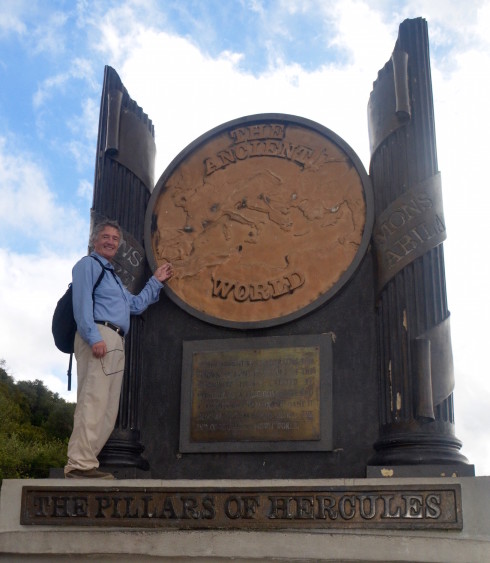
This is the route we are going to have to take. That’s a hell of a lot of walking, very little of it on flat ground.
Thankfully the road back to the top is quite gradual and is used by taxis who can take tourists up to as far as St. Michael’s Cave which is our first destination. When I checked into the Rock Hotel two days ago it reminded me of the type of place that James Bond might stay at and this sign on the way up confirms that the Rock of Gibraltar definitely has a tinge of mystery about it. There is a Spy Glass battery at the top, but this sign is on a locked gate near the bottom. I wonder what’s really going on inside?
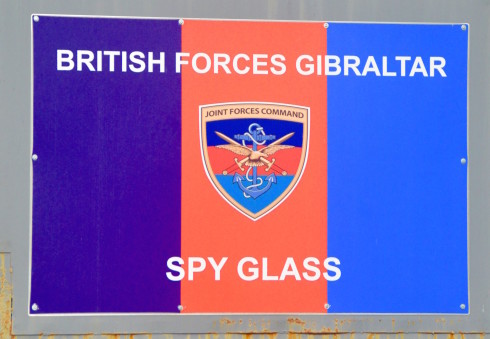
St. Michael’s Cave
Our first destination is St. Michael’s Cave which has been known since ancient times when it was believed to lead to a passage that connected the Rock of Gibraltar to Africa. That’s not true, but it did give a plausible explanation at the time as to how the monkeys got from Africa to Gibraltar. The cave system is quite extensive and impressive. Frankly, given the name, I was expecting something more like a hermit’s cave, but it’s anything but.
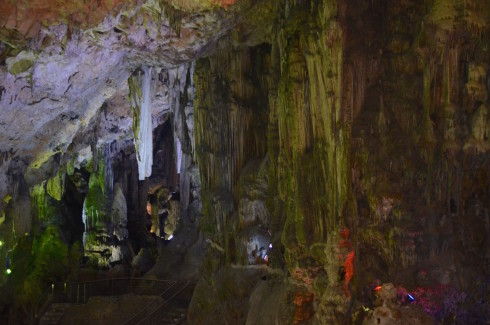
The portion known as Cathedral Cave is now used as a 400 seat amphitheatre for concerts that use the natural echoes created by the cave to great effect. Here I am doing my best Pavarotti imitation. Thankfully, nobody was recording it.
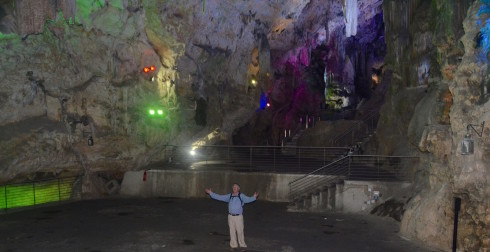
Alison was more impressed by this giant stalactite that had fused the ceiling to the floor.
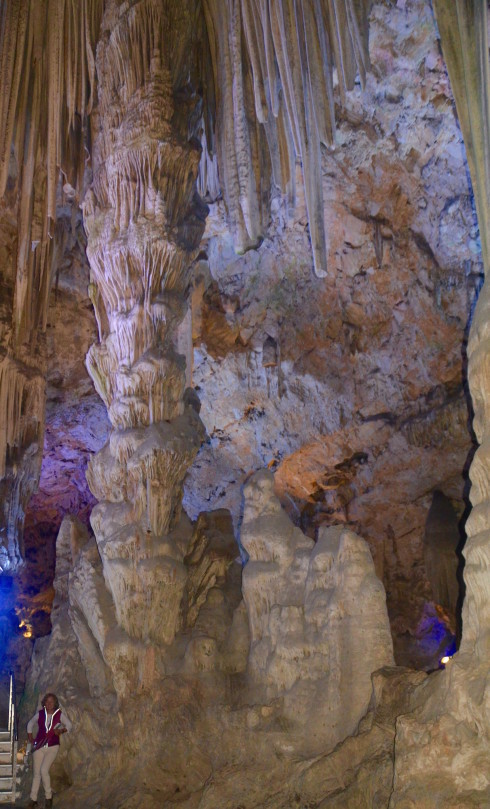
After visiting the cave we stopped for a quick bite at the small and frankly, pretty crappy, cafe associated with the St. Michael’s Cave gift shop. After this we had a long walk to almost the other side of the Rock of Gibraltar to the entrance to the famous tunnels. However there were a number of distractions along the way including these fritillaria-like flowers that seemed almost to flow down the side of the hill.
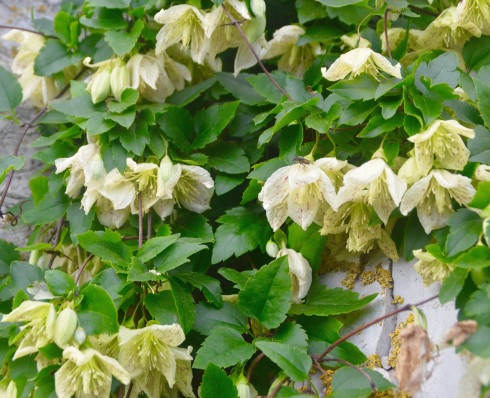
These iron rings are found all over the Rock of Gibraltar and were used to haul cannons up from below. According to this sign the cannons were hauled by men as opposed to horses or mules or even winches.
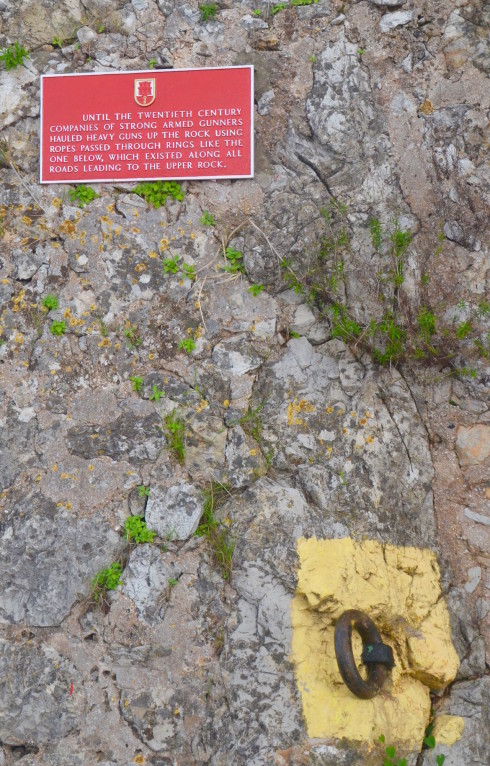
I’ve seen a lot of weird “Beware Of” or “Look Out For” signs in my time, but this one might be the strangest.
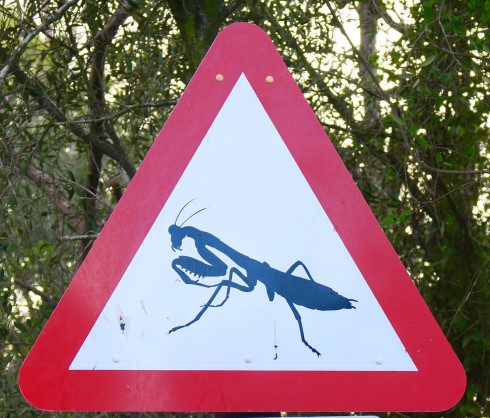
Do they have giant praying mantis’ on Gibraltar? Apparently they do have the largest species of mantis in Europe, but they are still only inches long. Admittedly you’d never want to run into one of these things that was giant sized as people did in 1957, but I think we’re safe today.

The Great Siege Tunnels, Rock of Gibraltar
So with these distractions we do get to the entrance of the justly famous Great Siege Tunnels of the Rock of Gibraltar. Believe it or not, there were fourteen sieges of Gibraltar from the time the British captured it in 1704 until the Spanish finally gave up in 1783. The last siege lasted four years and it was during this time that the original tunnels were constructed using manual labour and gunpowder. By building the tunnels the Brits could get cannons into spots that would otherwise be impossible to cover from anywhere else on the rock. So let’s go inside.
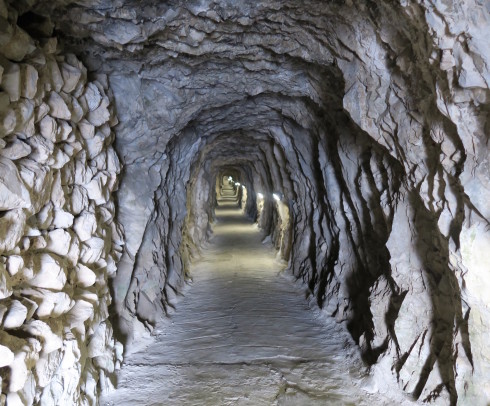
This is what the tunnels look like inside and there is enough room to stand up inside them quite comfortably.
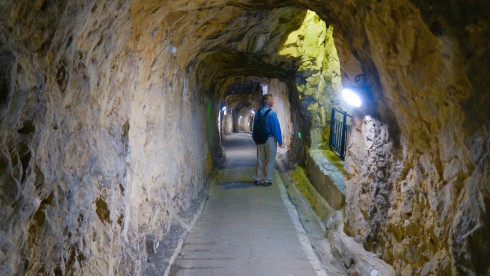
At periodic intervals there are rooms that open up off to the cliff side of the tunnel and there are openings where you can look down from above and watch what’s going on below. At the first stop we had this amazing view of the airport runway directly below.
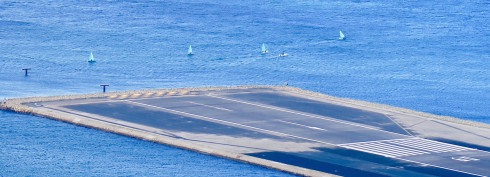
The sailboats reminded me of the ones you see at Toronto Island airport, but there are only smaller planes landing there, not behemoths like this RAF transport.

Here’s the view of Gibraltar’s principal cemetery and soccer field.
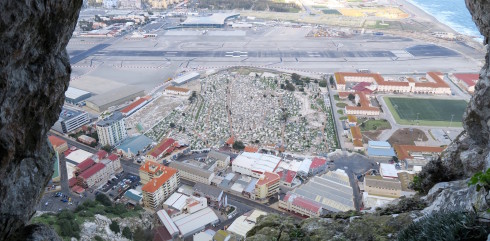
Further along we came to this lifelike sentry.
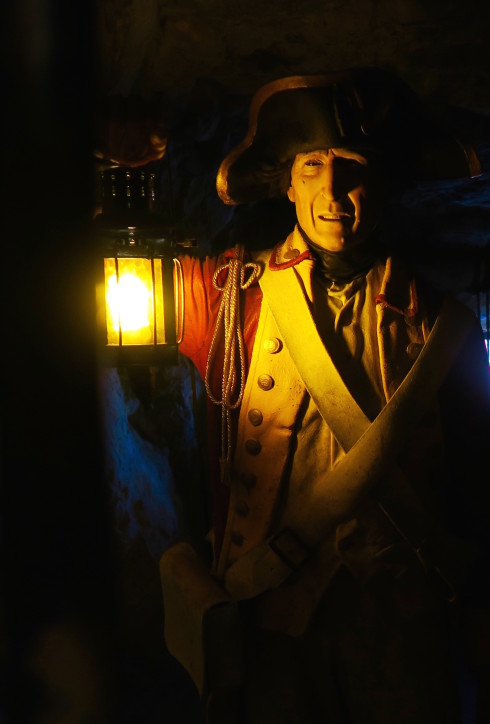
He was guarding this unusual gun emplacement. The down firing cannon was invented on the Rock of Gibraltar specifically for the purpose of being able to fire cannon balls down at the beseigers below.
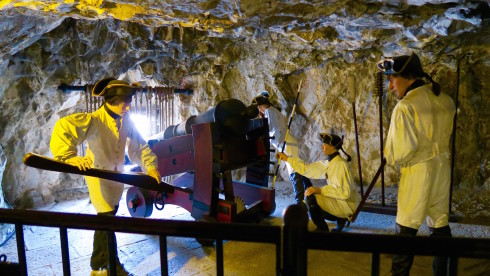
The tunnels were not abandoned after the Great Siege and in fact were greatly expanded upon in WWII with the help of Canadian miners.
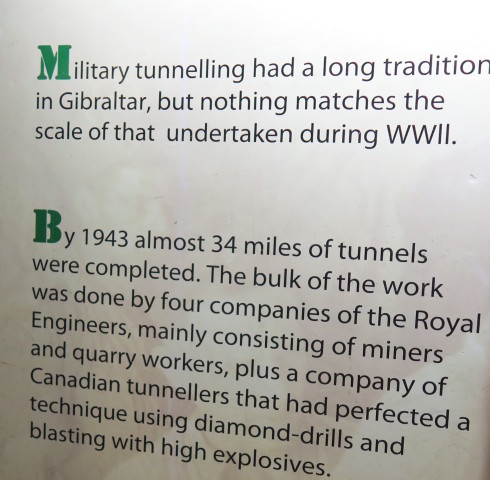
We spent a fair amount of time in the tunnels going to the very end that was open to the public; a distance of over a mile there and back. They were definitely a highlight of our visit to the Rock of Gibraltar and I highly recommend them to all visitors.
By now I could barely walk and we still had to descend a long way, as you can tell from the photographs of the airport. I was in a lot of pain, but nothing compared to the agony that this guy must have been in. Alison stepped in to intervene, but whether or not it did any good I don’t know. I suspect other visitors will come upon the same scene at the City Under Siege exhibit which is about halfway down theRock of Gibraltar from the tunnels.
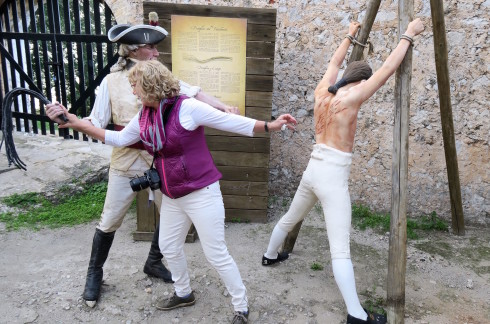
The last attraction on the usual tour of the Rock of Gibraltar is the Moorish Castle.
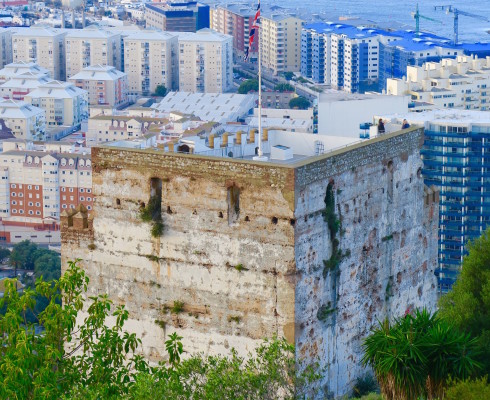
I’d love to be able to tell you what’s inside, but I was so bloody exhausted by now that I just wanted to get back to the Rock Hotel and put my feet up with one of their famous gin and tonics in hand.
Tomorrow we’re off to Marbella on the Costa del Sol for a few days, with a stop on the way at the small city of Ronda, where bullfighting was born. Won’t you join us?

